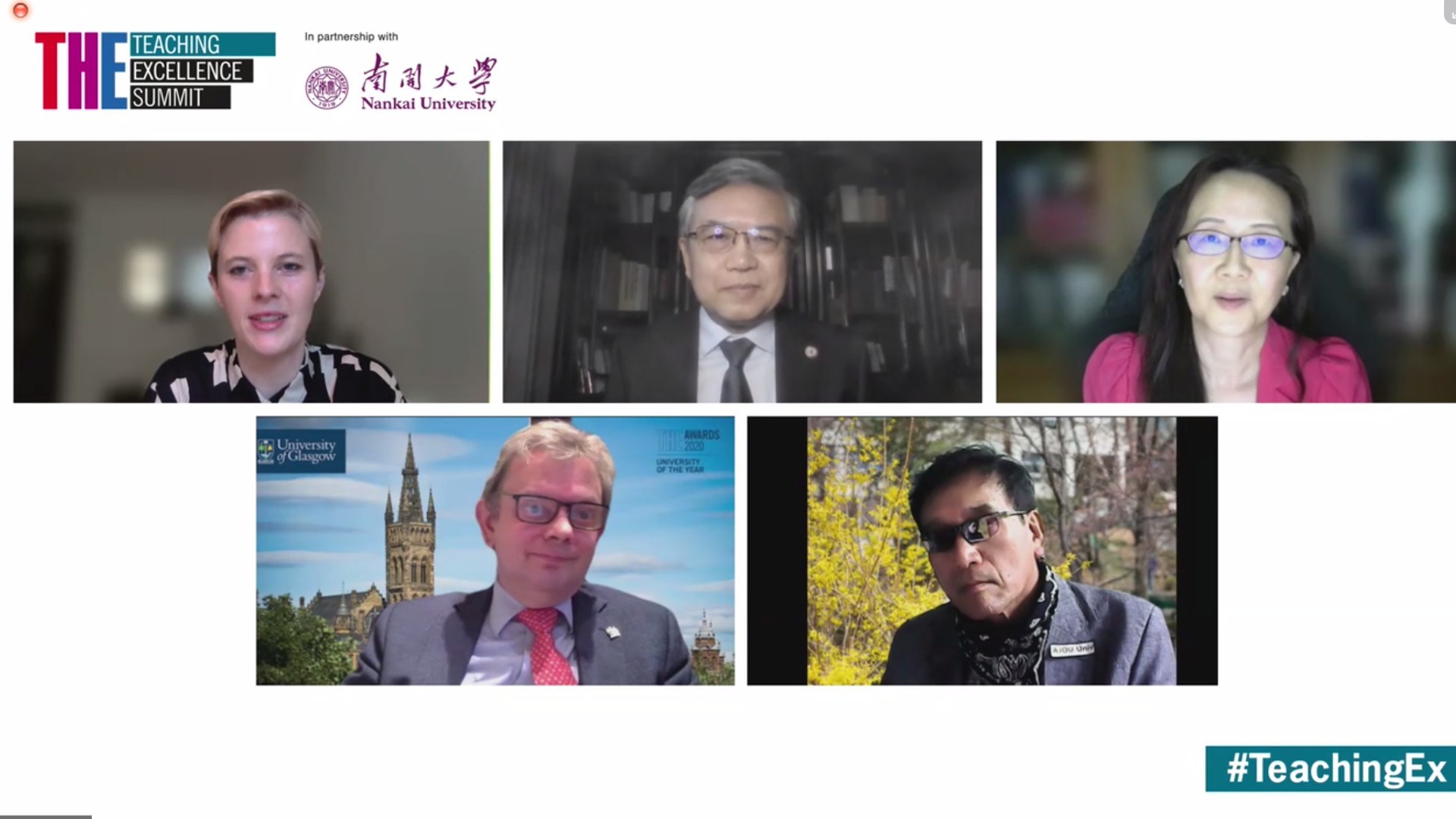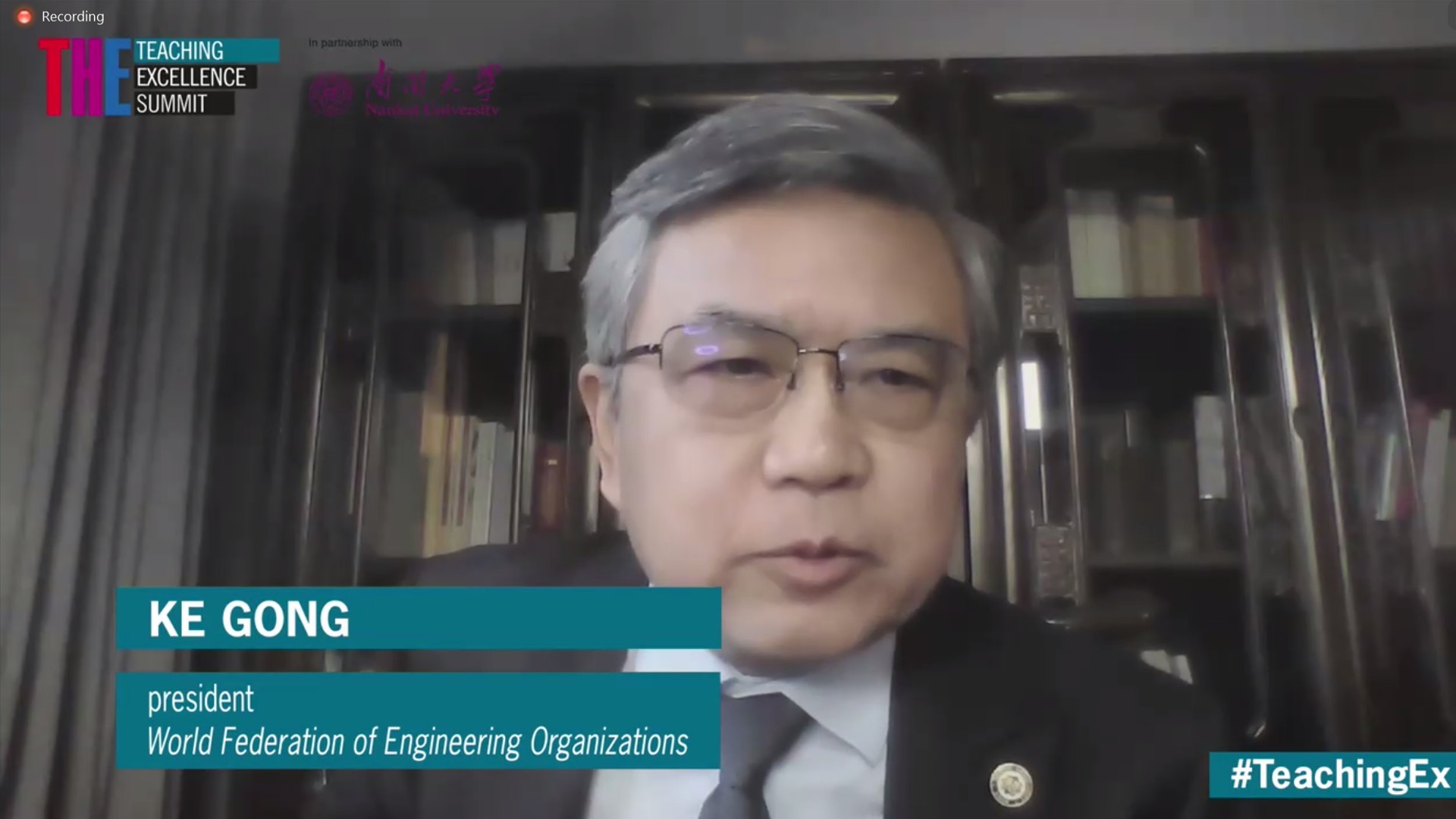Lea(r)ning into the future: Five aspects of continuing education for universities to look out for
December 4, 2021

What are the roles of universities, industries and governments in cultivating a culture of lifelong learning in society? How should universities develop a diverse suite of lifelong learning offerings to cater to learners in various stages of their professional careers?
These issues were addressed at the Times Higher Education (THE) Teaching Excellence Summit 2021, in a session titled “Instilling a passion for lifelong learning: how can universities do it?”.
As international educators laid out five key strategies for universities to adopt, Professor Susanna Leong, NUS Vice Provost (Masters' Programmes & Lifelong Education) and Dean of NUS School of Continuing & Lifelong Education (SCALE), shared her take on the topic.
Outlining NUS’ pedagogical philosophy in continuing education and training (CET), she said, “We believe that our relationship with our students does not end with the completion of an undergraduate degree. CET is very much an integral part of our students’ education and personal development, and a means to ensure they remain competitive.”
1. Offering pathways and opportunities
She also shared how all NUS students upon graduation are automatically enrolled in the NUS Lifelong Learners Programme which gives them access to a comprehensive suite of CET programmes, integrated with NUS’ existing pre-employment training framework. Selected CET courses can then be stacked towards qualifications such as graduate diplomas and certificates, or even a second undergraduate degree.
The ultimate objective is to strengthen the curriculum and offerings in pre-employment training and better prepare students and alumni for the future.

Professor Gong Ke, President of the World Federation of Engineering Organisations (WFEO) and previously the President of Nankai University, agreed.
“The most important thing is to better prepare our students to be lifelong learners. They have to have the motivation and skills to continue effective learning after graduation,” he said.
Rather than being perceived as the zenith of the education process, tertiary education should be considered one of many points in a continuing educational trajectory, and lay a solid foundation for students to become independent lifelong learners.
He further stressed the importance of changing not just the mindsets of students, but that of teachers, as well as the need for faculty development and training courses for educators to become advocates of lifelong learning.
2. Developing a multidisciplinary mindset
Prof Leong also stressed the need for a multidisciplinary mindset in developing continuing education programmes and responding strategically and proactively to the ever-increasing urgency for continuous upskilling and reskilling.
“It is no longer sufficient to simply address the problem with just one area of knowledge. A multidisciplinary education helps our students thrive and deliver greater value in an increasingly complex and uncertain world,” she said.

This was echoed by Prof Gong, who raised the example of climate change as a challenge that requires a multidisciplinary approach. Acknowledging that most engineers have not received training on climate change mitigation strategies in school, he said, “This is very challenging for our teachers because it is a new challenge and out of the tradition of the courses. It is so complex so we need teams from different disciplines to set new models of learning in campus and beyond campus.”
In preparing learners for such challenges, NUS has introduced multidisciplinary programmes like the Master of Science, jointly offered by five schools. Other multidisciplinary programmes include courses in venture creation, data science and machine learning, and even at the undergraduate level, the new NUS College of Humanities and Sciences that gives undergraduates more flexibility in interdisciplinary courses and a common curriculum of core modules.
“We hope by doing so, we will be able to equip our students with this continuous ability to be future-ready. We see a very healthy trajectory in terms of the students and alumni coming back to the University to read short courses, certificates and micro-credentials, or deep-skilling in terms of Masters programmes,” said Prof Leong.
3. Partnering industries
Another point raised during the discussion was the need for continuing education initiatives to collaborate with industry and respond agilely to its demand for upskilling and retraining, in order to provide the course programmes and credentials that society needs.
“The production of CET offerings is from the intelligence that we obtain from industry,” Prof Leong explained.
“The data, in terms of what is needed by employees and what talents are needed by businesses, would then be fed back into the entire university ecosystem. This will then go on to strengthen our pre-employment training and put us in a better position to prepare our students to be future-ready.”
Professor Anton Muscatelli, Principal and Vice-Chancellor at the University of Glasgow, also underscored the importance of such partnerships with industry and international organisations such as UNICEF.
“Working with partners like FutureLearn and Coursera has been really important because they have large customer bases,” he added.
“No single university, no matter how large or reputable, will be able to tap anything like that.”

Professor Euiho Suh, Dean and Vice-President of Ajou University, also shared about partnerships with large companies like Samsung in developing lifelong learning courses. Prof Gong also elaborated on how Chinese universities have been carrying out professional development in industry, a trial promoted by the WFEO.
“We have a very good working practice with our big companies, with whom we have jointly-designed courses to match their special needs and those of different companies and industry partners,” he said.
4. Working with governments
Besides universities and industries, it was also recognised that governments are a key driving force in developing such lifelong learning programmes.
As Prof Leong has noted, one aspect is in providing national funding to render the suite of CET offerings accessible and affordable to learners. With SkillsFuture subsidies that cover up to 70 per cent of course fees, learners pay a reduced amount of fees. This goes a long way in incentivising and motivating learners to return to school.
Applauding the deep investment that the Singapore government is putting into lifelong learning, Prof Gong added, “From the viewpoint of the World Federation of Engineering Organisations, we too call on the governments and member states of United Nations to give support to engineers and working industries, to have the opportunities and financial aid to carry out professional development.”
More importantly, however, is the support that governments can provide in marrying lifelong education and the needs of industry, and helping universities understand what industry needs.
Citing the skills framework collated by SkillsFuture Singapore, Prof Leong elaborated on how it creates a useful common skills language for individuals, employers, and training providers.
“This helps us, the university, to align our curriculum with the skills framework and help us produce courses that will assist learners to pivot into roles that have been now created as a result of technology advancements,” she shared.
5. Tailoring courses for various needs
Finally, universities also need to ensure a diverse suite of course offerings, pathways and skill sets, tailored to the needs of individuals in the various stages of their professional lives.

Prof Muscatelli shared how the University of Glasgow offers massive open online courses (MOOCs) and micro-courses that teach pertinent skills such as basic data science, climate change literacy and key project management skills. These cater to professionals looking to reskill and upskill on a part-time basis, while the courses focusing on broad-based skills cater to people looking to develop themselves in areas of management leadership and practical project management.
Agreeing on the importance of a comprehensive array of programmes and outlining the continuing education trajectory at NUS, Prof Leong said, “We envision that our students and alumni, over their entire lifetime and career, will return to the university at three stages in their life.”
Younger alumni in the career acceleration stage, who would already have acquired deep-skilling from their undergraduate education, need courses to overlay the predominantly academic deep-skilling with in-demand, relevant CET skills and knowledge. This could be in subject areas such as data science, design thinking, business management, communication and new media.
Courses also need to cater to alumni in a mid-career situation where they will pivot either horizontally into new roles, or vertically in the hierarchy which requires deeper knowledge and leadership skills.
Finally, offerings are needed to help learners progress into the distinguished career stage. This is when individuals are in their golden years and having led a fulfilled and accomplished career, may want to give back with a meaningful second career in teaching.
“We would have to have offerings to support longevity, lifespan, as well as living a very meaningful, long life. We hence imagine a very diverse suite of offerings to support learners through their entire career and in their entire life,” Prof Leong concluded.
Original article: https://news.nus.edu.sg/learning-into-the-future-five-aspects-of-continuing-education-for-universities-to-look-out-for/

